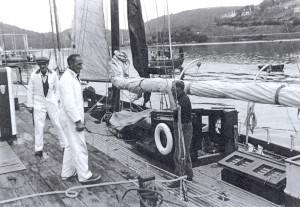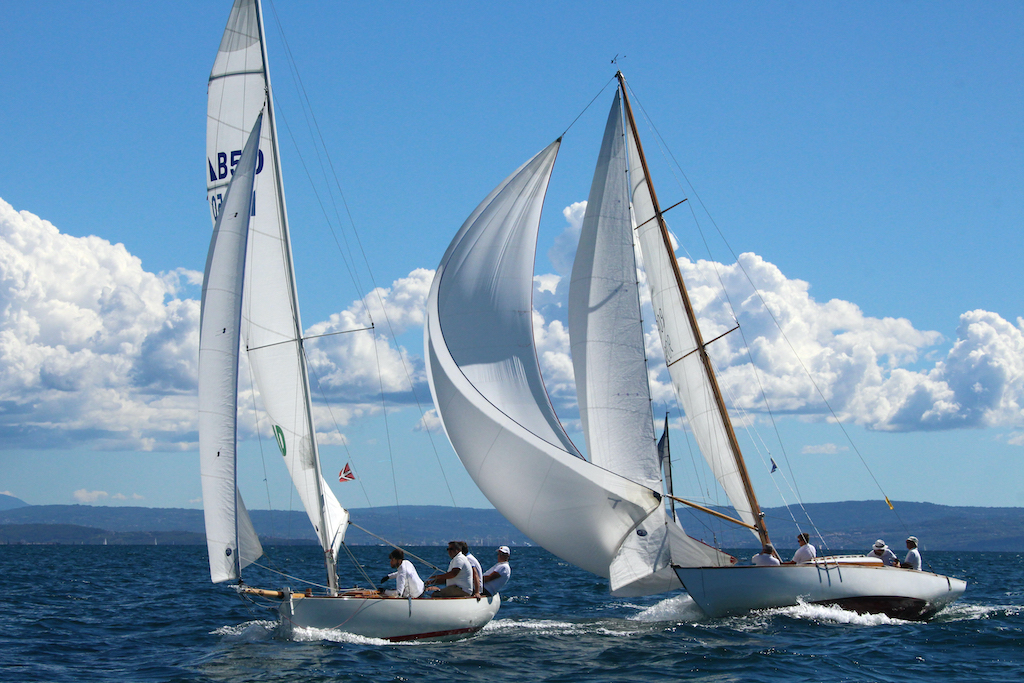Alexander Richardson is a lesser known name amongst marine architects of the classic period. A Liverpool man, he was responsible for some great yacht designs of the of which perhaps the best known in her day was the 98’ Big Class cutter Iverna, built for John Jamieson the Irish whisky man in 1890 by Fay & Co (later to become Camper & Nicholson) Southampton. She ended her days on the beach on the west side of the Bag in the Salcombe Estuary.
In 1906, Philip of Dartmouth secured the order to build the 106’ lod yawl, Dwyn Wen for James Burton of Beaumaris on Anglesey, designed by Richardson. The Board must have been happy to secure this order because Richardson’s design specification was for a top quality yacht and therefore not cheap with teak planking and a wonderful panelled interior typical of the period but also using Philip’s skills in steel fabrication to make the steel frames to produce an immensely strong yacht. Not every yard had the double capacity of being able to work in wood and steel but Philip had the metal working skills associated with its active engine building workshops. Dwyn Wen sailed from Dartmouth on her maiden voyage, bound for New Zealand and after many changes of ownership and voyages around the Pacific with rumours of gun running is still afloat lying in Indonesia.
Alexander Richardson must have been impressed by the work at Philip’s so much so that when he was asked by Edward Glazebrook to design a yacht he recommended Philips for the construction. Glazebrook was a timber merchant from Liverpool so it was natural for him to choose a local man to design his yacht, especially a man with a reputation for some fine yacht designs but given that there were plenty of shipyards in the North West there must have been a very special attraction to bring the work south to Philips. Glazebrook named his new yacht White Heather (name changed later to Varuna) and she was launched into the Dart in 1909. White Heather measured 59’7” on deck, 43’ on the water-line, 12’6” in the beam and drew 8’6” of water. Her bowsprit took her overall length to just over 70’.
Although by modern standards her sail size was considerable with a working sail area of 820sq’, her mainsail was still manageable at 389sq’. The design had many of the Richardson signature features, notably a fiddle bow, sometimes known as a clipper bow also found on the great Iverna and on the little 35’ Myfwany, built by Samuel Bond of Birkenhead in 1897.









